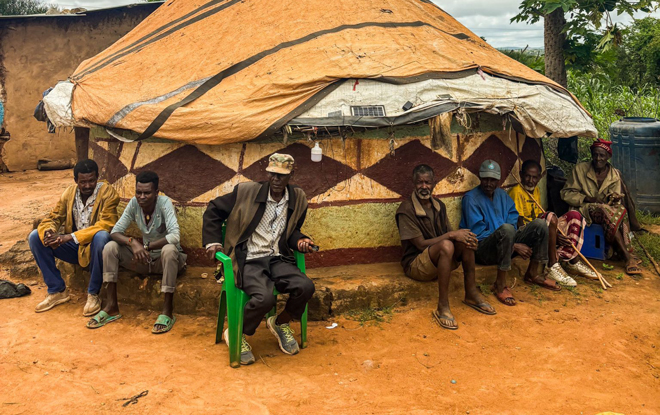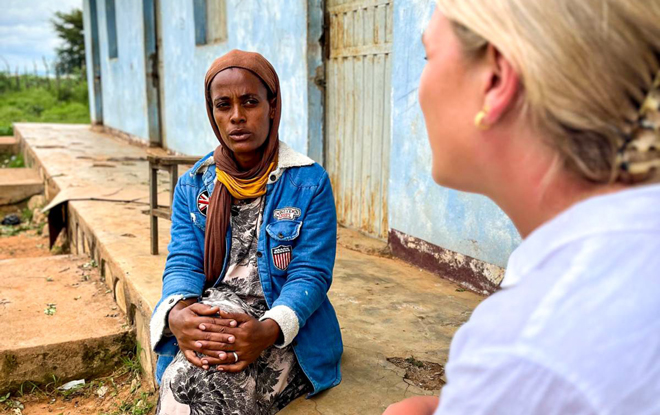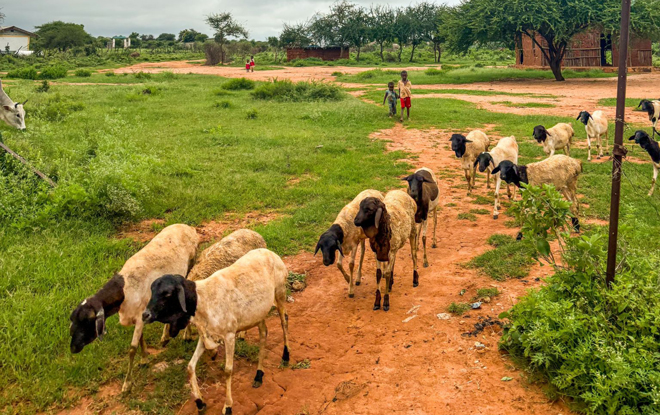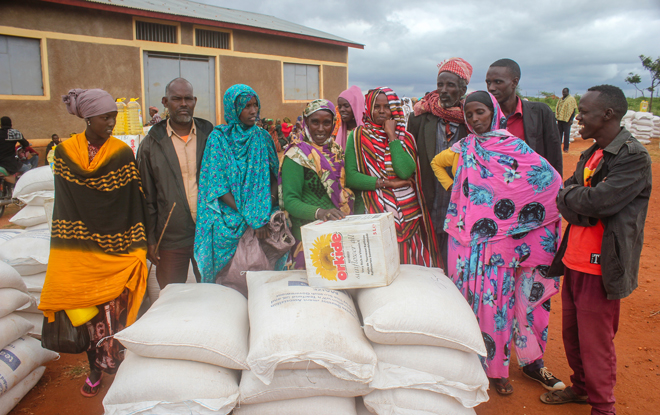Avoiding Famine in East Africa
3745 0
Famines don’t happen every year. They are not the norm, not even in Africa where too many children still routinely skip meals as their parents scratch out a living from the parched earth. Yet the Horn of Africa is on the brink of famine again.

These men once had thriving agricultural businesses, the drought has stripped them of their livelihoods as well as their health. Photo: Lisette Reymer
The last time famine was declared in Africa in 2011, I had just returned from the Somali border with Ethiopia, with World Vision. Frail mothers sat beneath tarpaulins in a refugee camp weaving colourful baskets from strips of World Food Programme sacks. They would sell them for a few cents to buy salt and spices to enhance the bland offerings of aid agencies.
‘Famine’ is a high bar. Acute malnutrition rates among children must exceed 30 per cent; and more than 2 people per 10,000 must be dying per day for lack of access to food.
After the last three years of erratic rainfall, failed crops and decimated herds, malnutrition rates in East Africa are now over 20%. People are dreadfully thin. Aid agencies are mobilising once again.

Newshub journalist Lisette Reymer interviewing nurse Elsa who works at the local health clinic. Photo:Alex Parsons
I have just returned from Ethiopia covering the current drought with a TV3 Newshub crew. We met family after family who had seen their herds and crops wither and die before their eyes. They were unable to sell their starving cows and unable to make the necessary switch to cultivating their farms as the rains were still too unpredictable. They were stuck; stripped of dignity by their lack of self-sufficiency as their hungry children pleaded as they went to bed with empty stomachs. I met desperate parents, like one mother reduced to gathering firewood for sale when she used to churn milk and make butter from her herd of 50 cows. She told me her story and didn’t ask me for anything, but we both knew how few options she had left. I knew my job was to help get food to her before she perished too.

The green grass is deceptive. After three years of failed rains, Ethiopia has only just experienced minimal rainfall in the last few weeks. What locals say is a drop in the bucket. Photo: Lisette Reymer
East Africa had advanced tremendously in the 13 years since the last famine. All my visits in between then and now had seen thriving communities organising themselves in cooperatives and entrepreneurial clusters called self-help-groups - many with thousands of dollars of assets under management, eagerly participating in commercial markets – selling grain and livestock in exchange for everything else they needed. This had become the norm - not rich, but not in desperate want.
Sure, there are wars. A staggering 40 million Africans are displaced today by national armed conflict. But despite civil war, I had previously watched growth take effect one family at a time in the peaceful regions. Oxen and carts were swapped for tractors, flatbed trucks and minivans connecting Ethiopia, Uganda and Rwanda’s hinterlands with its cities and regional markets. Malnutrition rates had plummeted. Children were finishing school and even went to university.

A food distribution centre in Ethiopia’s operated by Tearfund's partner, TDA.
Drought is hard to manage, but famine is avoidable. Land can be irrigated as crops take hold, despite the irregularities of rain fall. Families can be assisted with cash or vouchers to enable access to lifesaving nutrition, even as incomes evaporate. Food can be moved to where it’s needed. As recovery commences, surplus crops can be traded for small livestock and small livestock for large ones.
This is the pathway back for the communities of Southern Ethiopia where I visited. They just need to see it through the immediate season of severity.
This is what we must do now; support families to see it through, one day at a time. We must support farming cooperatives for a better future, as they plough their fields and grow drought-resilient maize, beans, and peas, in search of a pathway back from the brink.
It takes $150 to feed a family of six for one month.
Will you help them – and us – to ensure they avoid a famine?
Because famine is not inevitable.
Donate now